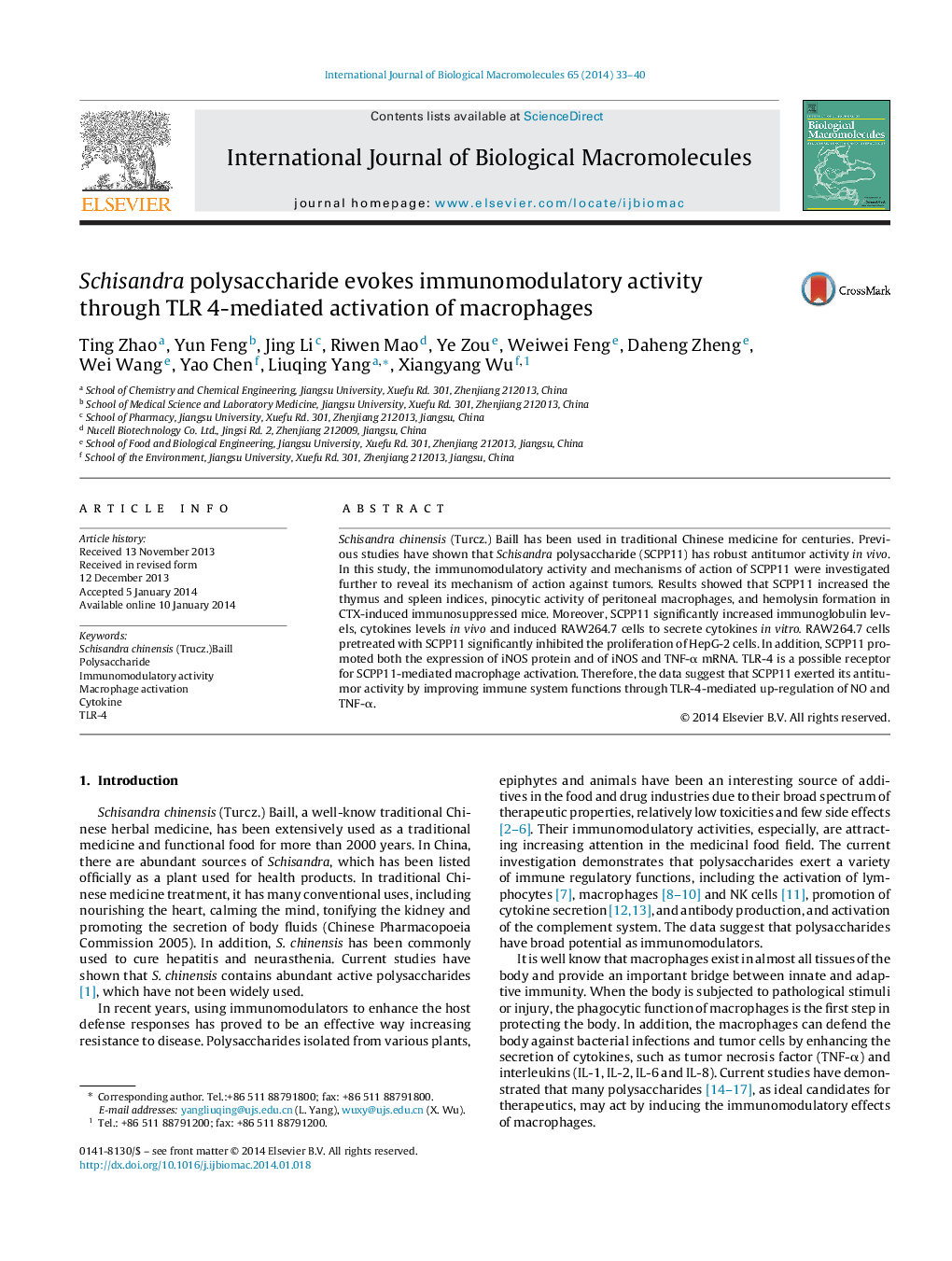| Article ID | Journal | Published Year | Pages | File Type |
|---|---|---|---|---|
| 1986516 | International Journal of Biological Macromolecules | 2014 | 8 Pages |
•SCPP11 could significantly improve the immune suppression induced by CTX in vivo.•TLR-4 is the mainly receptor for SCPP11 mediated macrophage activation.•SCPP11 could up-regulate protein and gene expression through TLR-4 receptor.•SCPP11 exerts its antitumor activity by improving immune system functions.•SCPP11 could be explored as a potential antitumor immunomodulatory agent.
Schisandra chinensis (Turcz.) Baill has been used in traditional Chinese medicine for centuries. Previous studies have shown that Schisandra polysaccharide (SCPP11) has robust antitumor activity in vivo. In this study, the immunomodulatory activity and mechanisms of action of SCPP11 were investigated further to reveal its mechanism of action against tumors. Results showed that SCPP11 increased the thymus and spleen indices, pinocytic activity of peritoneal macrophages, and hemolysin formation in CTX-induced immunosuppressed mice. Moreover, SCPP11 significantly increased immunoglobulin levels, cytokines levels in vivo and induced RAW264.7 cells to secrete cytokines in vitro. RAW264.7 cells pretreated with SCPP11 significantly inhibited the proliferation of HepG-2 cells. In addition, SCPP11 promoted both the expression of iNOS protein and of iNOS and TNF-α mRNA. TLR-4 is a possible receptor for SCPP11-mediated macrophage activation. Therefore, the data suggest that SCPP11 exerted its antitumor activity by improving immune system functions through TLR-4-mediated up-regulation of NO and TNF-α.
